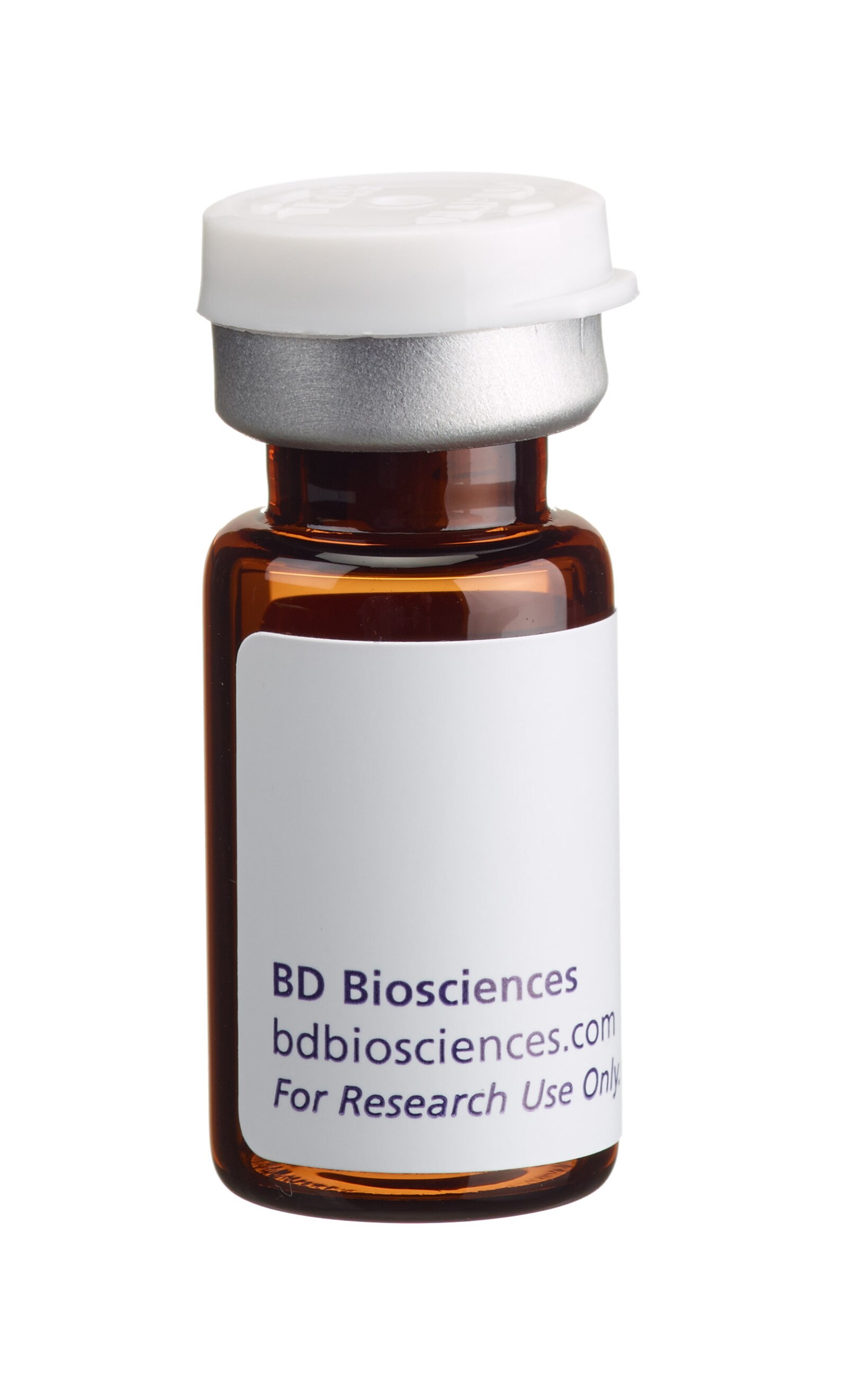-
Reagents
- Flow Cytometry Reagents
-
Western Blotting and Molecular Reagents
- Immunoassay Reagents
-
Single-Cell Multiomics Reagents
- BD® AbSeq Assay
- BD Rhapsody™ Accessory Kits
- BD® Single-Cell Multiplexing Kit
- BD Rhapsody™ Targeted mRNA Kits
- BD Rhapsody™ Whole Transcriptome Analysis (WTA) Amplification Kit
- BD Rhapsody™ TCR/BCR Profiling Assays for Human and Mouse
- BD® OMICS-Guard Sample Preservation Buffer
- BD Rhapsody™ ATAC-Seq Assays
-
Functional Assays
-
Microscopy and Imaging Reagents
-
Cell Preparation and Separation Reagents
-
Training
- Flow Cytometry Basic Training
-
Product-Based Training
- BD FACSDiscover™ S8 Cell Sorter Product Training
- Accuri C6 Plus Product-Based Training
- FACSAria Product Based Training
- FACSCanto Product-Based Training
- FACSLyric Product-Based Training
- FACSMelody Product-Based Training
- FACSymphony Product-Based Training
- HTS Product-Based Training
- LSRFortessa Product-Based Training
- Advanced Training
-
- BD® AbSeq Assay
- BD Rhapsody™ Accessory Kits
- BD® Single-Cell Multiplexing Kit
- BD Rhapsody™ Targeted mRNA Kits
- BD Rhapsody™ Whole Transcriptome Analysis (WTA) Amplification Kit
- BD Rhapsody™ TCR/BCR Profiling Assays for Human and Mouse
- BD® OMICS-Guard Sample Preservation Buffer
- BD Rhapsody™ ATAC-Seq Assays
-
- BD FACSDiscover™ S8 Cell Sorter Product Training
- Accuri C6 Plus Product-Based Training
- FACSAria Product Based Training
- FACSCanto Product-Based Training
- FACSLyric Product-Based Training
- FACSMelody Product-Based Training
- FACSymphony Product-Based Training
- HTS Product-Based Training
- LSRFortessa Product-Based Training
- United States (English)
-
Change country/language
Old Browser
This page has been recently translated and is available in French now.
Looks like you're visiting us from {countryName}.
Would you like to stay on the current country site or be switched to your country?
BD Pharmingen™ Z-VAD-FMK, General Caspase Inhibitor
(RUO)



Flow cytometric analysis of apoptosis in Jurkat cells (Human T-cell leukemia; ATCC TIB-152). Jurkat cells were preincubated with the following: no inhibitor (upper left and bottom left panels), 20 µM Z-VAD-FMK (upper center and bottom center panels) or 20 µM negative control inhibitor (Z-FA-FMK, upper right and bottom right panels) (Cat. No. 550411) for 30 min, and then either left untreated (bottom row) or treated with 4 µM of campthothecin for 3 hr (top row). Following incubation, cells were collected and stained with PE Annexin V (Cat. No. 559763) to identify cells undergoing apoptosis. The results indicate that in campthothecin treated cells, approximately 42% of the cells were induced to undergo apoptosis and the use of the general caspase inhibitor Z-VAD-FMK reduced the level of apoptosis to that observed in the untreated control. Cells treated with Z-FA-FMK (Cat. No. 550411) showed similar results to the campthothecin treated cells without inhibitor, indicating that the negative control inhibitor did not attenuate apoptosis.


BD Pharmingen™ Z-VAD-FMK, General Caspase Inhibitor

Regulatory Status Legend
Any use of products other than the permitted use without the express written authorization of Becton, Dickinson and Company is strictly prohibited.
Preparation And Storage
Store the lyophilized Z-VAD-FMK inhibitor at -20˚C. Reconstitute the Z-VAD-FMK inhibitor in DMSO before use. The reconstituted Z-VAD-FMK inhibitor may be stored in small aliquots at -20˚C.
Recommended Assay Procedures
The Z-VAD-FMK inhibitor is designed to be used in both in vivo and in vitro cell based assays to measure the inhibition of apoptosis. Reconstitute 1.0 mg of the Z-VAD-FMK inhibitor in DMSO. A 10 mM stock solution may be made by dissolving 1.0 mg of Z-VAD-FMK in 214 µl DMSO. The final concentration of inhibitor may vary between experimental systems and investigators are encouraged to titrate the inhibitor for optimal performance. As a precautionary note, do not exceed a final DMSO concentration of 0.2% as higher levels may cause cellular toxicity and mask the effects of the caspase inhibitor.
Product Notices
- Since applications vary, each investigator should titrate the reagent to obtain optimal results.
- Please refer to www.bdbiosciences.com/us/s/resources for technical protocols.
Companion Products


Members of the caspase family play key roles in inflammation and mammalian apoptosis. Z-VAD-FMK is a cell permeable general caspase inhibitor that irreversibly binds to the catalytic site of caspase proteases and inhibits apoptosis. The peptide is O-methylated in the P1 position on aspartic acid providing enhanced stability and increased cell permeability. Z-VAD-FMK has a molecular weight of 467 Daltons.
Development References (3)
-
Gregoli PA, Bondurant MC. Function of caspases in regulating apoptosis caused by erythropoietin deprivation in erythroid progenitors. J Cell Physiol. 1999; 178(2):133-143. (Biology). View Reference
-
Schrantz N, Blanchard DA, Auffredou MT, Sharma S, Leca G, Vazquez A. Role of caspases and possible involvement of retinoblastoma protein during TGFbeta-mediated apoptosis of human B lymphocytes. Oncogene. 1999; 18(23):3511-3519. (Biology). View Reference
-
Thornberry NA, Lazebnik Y. Caspases: enemies within. Science. 1998; 281(5381):1312-1316. (Biology). View Reference
Please refer to Support Documents for Quality Certificates
Global - Refer to manufacturer's instructions for use and related User Manuals and Technical data sheets before using this products as described
Comparisons, where applicable, are made against older BD Technology, manual methods or are general performance claims. Comparisons are not made against non-BD technologies, unless otherwise noted.
For Research Use Only. Not for use in diagnostic or therapeutic procedures.
Report a Site Issue
This form is intended to help us improve our website experience. For other support, please visit our Contact Us page.